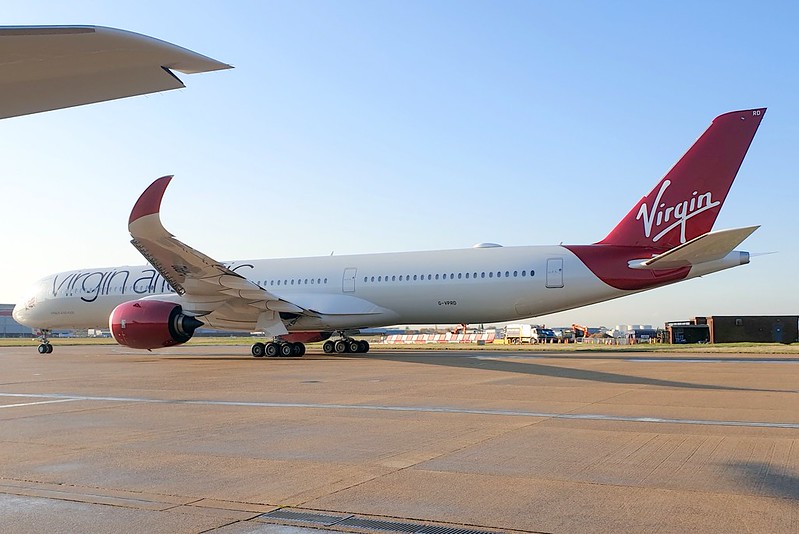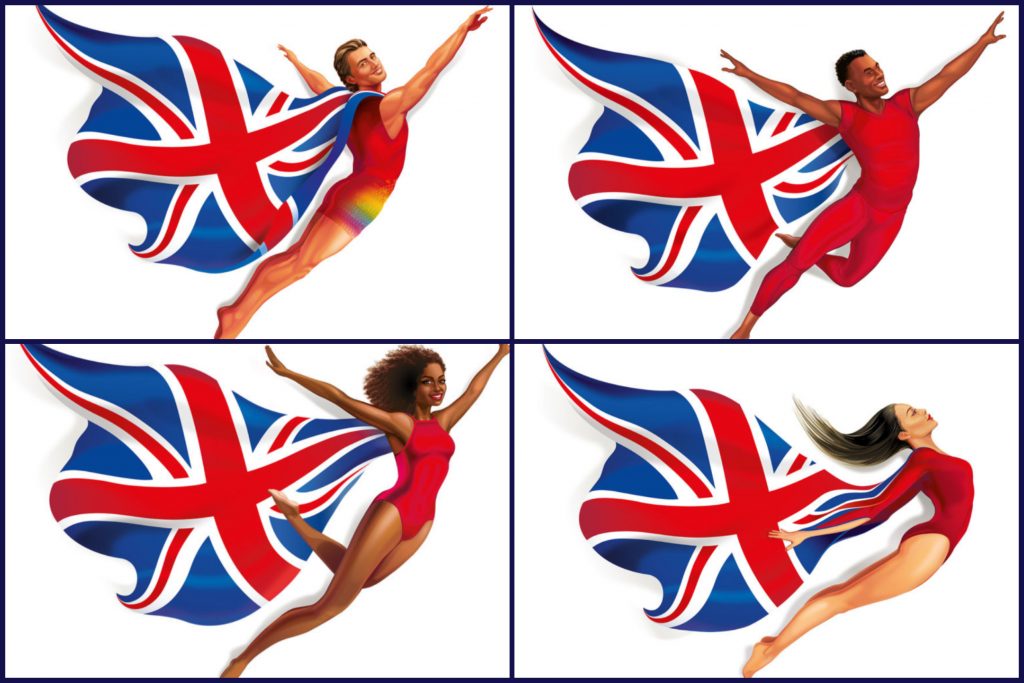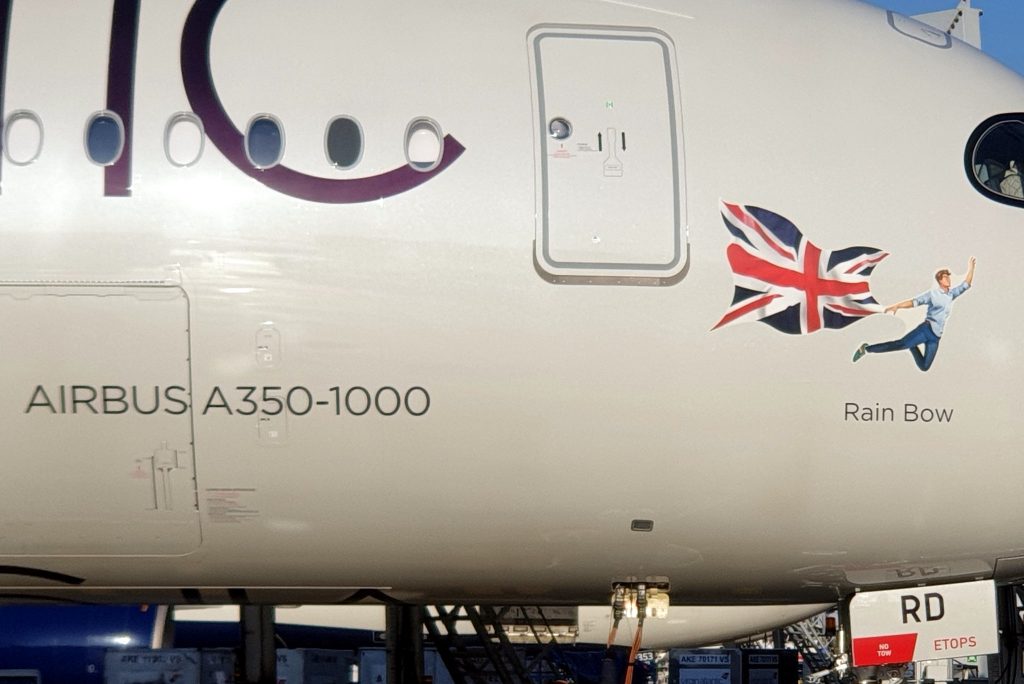
In the last six months, Virgin Atlantic has taken delivery of four brand new Airbus A350-1000 aircraft and with them, the airline heralded in a new era of ‘Flying Icon’s that represent modern Britain with a “diverse range of men and women”. But did Virgin Atlantic have to tone down its new Flying Icons to look ever so slightly less diverse?

The new Flying Icons were unveiled last April and they marked what Virgin admitted was a “big change” for the airline. One of the Icons was a male figure nicknamed ‘Rain Bow’ – an LGBTQ figure wearing a cut off leotard with rainbow coloured shorts.
Virgin’s decision to include male figures as Flying Icon’s marked a big step for Virgin. Before late last year, the airline adorned the front of its aircraft with ‘Flying Ladies’ – based on the famous Varga Girl artwork that was made famous during World War II.
The buxom figures, often wearing skimpy leotards, were doing little to challenge the perception that the airline industry is marred by gender inequality. In reality, Virgin Atlantic has pledged to tackle its gender pay gap, balance gender representation, committed to increasing BAME representation and been a fiercesome advocate for LGBTQ rights.
When Virgin took delivery of the aircraft that Rain Bow would feature on in October 2019, they even registered the plane as G-VPRD – as in Virgin Pride. But there were some subtle differences between how Rain Bow looked in reality to how Virgin had originally shown him off.

Rather than wearing a Pride-themed leotard, the updated Rain Bow had been dressed in a blue shirt and jeans.
Sources have now claimed Virgin made the change deliberately so as not to offend some customers in certain markets who might be offended by such as obvious LGBTQ reference. In some cases, Virgin flies to countries where homosexuality is still illegal so the thinking is that a design change was made to avoid a homophobic backlash.
Not so says Virgin, pointing out that the leotard-wearing ‘Rain Bow’ was an early iteration of the design and that all of its new Flying Icon’s have seen subtle changes – in fact, none of them is now wearing a leotard.
“The Flying Icons we released initially were early iterations of the designs and we’re thrilled to introduce the final images on each of our aircraft,” a spokesperson for Virgin Atlantic explained.
“Whilst the design details may have changed slightly, the concept is very much the same – images that feature a diverse range of men and women who represent modern Britain.”
A further eight Flying Icons will be introduced over the next few years according to the airline. We’re likely to see a new design aesthetic that moves away from skimpy leotards towards normal clothing that represents what real people look like – after all, not everyone who identifies themselves as LGBTQ is wearing rainbow-coloured clothing.
It’s more of a subtle message but an important acknowledge that diversity doesn’t mean different.
Mateusz Maszczynski honed his skills as an international flight attendant at the most prominent airline in the Middle East and has been flying ever since... most recently for a well known European airline. Matt is passionate about the aviation industry and has become an expert in passenger experience and human-centric stories. Always keeping an ear close to the ground, Matt's industry insights, analysis and news coverage is frequently relied upon by some of the biggest names in journalism.







